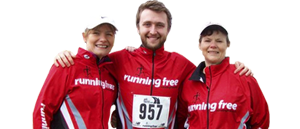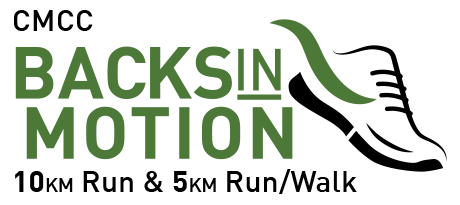As the mercury starts to drop, the majority of the endurance sports’ season is now over and it’s time to recover, repair and build our training plans to set PB’s in 2014! This time of year is a great time to correct imbalances / deficiencies that develop over the course of training / competing as well as building a strong base for next season – whether it’s an early season “A Race” like Around the Bay or, like in my case, a late season race like Ironman Cozumel
Maximizing Economy

Most of us have heard about VO2 and Lactate Threshold as vital contributors to ideal endurance performance, however a lesser-discussed quality is Movement Economy. Movement Economy refers to the relationship between effort (perceived or heart rate) and performance. Through enhancing an athlete’s movement economy, an athlete will either be able to maintain a given pace at a lower effort, or race at a higher pace at the same effort (prior to training). As an athlete looking to improve performance, the goal is generally to improve economy – Long, Slow Distance sessions enhance fat, High Intensity Intervals increase your mitochondrial density and “Tempo Runs” improve lactate tolerance – all of which are common approaches to improve the output (pace) at a given level of effort.
To Lift or Not to Lift?
As an endurance athlete and from regularly working with endurance athletes, I have seen & experienced the benefits of strength training for these athletes. Strength training can & should never completely replace swimming, running, cycling, etc., but it can definitely supplement your sport training to increase performance while reducing your training volume – thereby reducing your risk of injury! In addition to targeting muscles required for sport performance, strength training can also work to address muscular imbalances or biomechanical deficiencies that are preventing athletes from achieving even greater performances. For most of us, our days are slightly more complex than wake up, train, eat, sleep, repeat, so we need to get the most bang-for-our-buck out of our training, and eventually we start to see diminishing returns from additional runs, rides or swims – this is where properly programmed strength training sessions can yield great results!
You Won’t Look Like a Linebacker
In most endurance sports, the power to weight ratio matters – as your body weight increases, your performance typically will suffer. This is a huge barrier for endurance athletes when it comes to strength training, right? Wrong.
Muscular growth (“Hypertrophy”) occurs by precisely coordinating training, nutrition & recovery over an extended period of time – all the variables need to align in order to gain muscle mass. Thankfully for endurance athletes, the nature of our training presents a huge barrier: aerobic exercise limits a muscle’s ability to grow. This occurs through a number of hormonal and metabolic interactions, but moral of the story is that aerobic training offsets the traditional response to gain muscle mass – you still gain the strength & power, but you won’t pack on the pounds.
Our Favourite Exercises
You don’t have hours to spend in the gym every day, so we need to be effective with our training sessions. Below are the top exercise used for maximizing performance and preventing injuries!
FOR ALL ATHLETES: Buttress Plank
Core stability is an essential component of any training program because a healthy core is a necessity for everything we do – from picking up boxes to riding 100+ miles in the aero position (relatively) pain-free. The Buttress Plank is a progression of the standard Plank (“Prone Bridge”). The reason I love the Buttress Plank so much is that it as you shift your base of support, it challenges your core to maintain postural stability without shifting side to side to compensate.
FOR ALL ATHLETES: Deadlift, Front Squat
Why? Deadlifts and Front Squats are great exercises that when performed correctly, develop strength through the gluteal complex, hamstrings and help develop a great amount of core stability3-5. When we break down the movement needs of most endurance athletes, each of these movements will be included within the primary needs section of all ground-based sports. Whether you’re trying to run a 40 in under 5 seconds or break 3 hours for the marathon, strong and powerful glutes & hamstrings are essential to hitting your goals.
FOR CYCLISTS: Dumbbell Step Ups & Monster Walks
Dumbbell Step Ups is a great exercise for targeting our hamstrings & glutes – both muscles that help power cyclists along the flats and pump out the watts going uphill. Get the most out of the exercise by keeping your shins as vertical as possible and only pushing through the foot on the box. Monster Walks (“Cowboy Walks”) are a great exercise at targeting muscles on the outer portion of the hip (Gluteus Medius & Minimus) that help keep your legs in strong alignment. By keeping our legs aligned, we are able to move efficiently and transfer the power from our hips through our knees and into the pedals (cyclists) or the ground (runners).
FOR RUNNERS: Bulgarian Split Squat & Towel Crunches
I’ll be the first to admit – Bulgarian Split Squats (sometimes referred to as Rear Foot Elevated Split Squats) are one of my least favourite exercises to perform and one of my favourite to prescribe for my athletes because they put a lot of stress on the glutes, hamstrings and quads and require single leg stability at the forward leg and hip flexor mobility of the rear foot – which are all important contributors to great running gait.
The second exercise is a prehab exercise designed to help strengthen the foot, ankle and lower leg in order to prevent injuries and keep you efficiently pounding the pavement! Towel crunches strengthen the small, intrinsic muscles that help stabilize the foot, arch and ankle. The benefits of towel crunches are never visible, but the consequences of not doing them regularly can result in pain, discomfort and lower levels of performance.
Bottom Line
Can strength training replace your sport-specific (sport skill) training – running, cycling, or swimming? No. But especially during the Base & Build phases our your annual training plans, adding 1-3 strength training sessions per week and reducing your training volume can develop a strong base, improve economy and prevent injuries – keeping you strong & in peak physical condition throughout the year! Speak with a Certified Strength & Conditioning Coach (NSCA) who understands the nuances of endurance training in order to successfully combine Strength Training into your endurance program.
Resources:
Friedlander, AL., Casazza, GA., Horning, MA., Usaj, A., Brooks, GA. (1999). Endurance training increase fatty acid turnover, but no fat oxidation, in young men. Journal of Applied Physiology, 86(6). Piacentini, MF., De Ioannon, G., Comotto, S., Spedicato, A., Vernillo, G., La Torre, A. (2013). Concurrent strength & endurance training effects on running economy in master endurance athletes. Journal of Strength & Conditioning Research, 27(8). Sedano, S., Marin, PJ., Cuadrado, G., Redondo, JC. (2013). Concurrent training in elite male runners: the influence of strength versus muscular endurance training in performance outcomes. Journal of Strength & Conditioning Research, 27(9). Leyland, Tony (Simon Fraser University) Biomechanical Analysis of the Deadlift Nuzzo, JL., McCaulley, GO., Cormie, P/. Cavill, MJ., McBride, JM. (2008). Trunk muscle activity during stability ball and free weight exercises. Journal of Strength & Conditioning Research, 22 (1). Hamlyn, N., Behm, DG., Young, WB. (2007). Trunk muscle activation during dynamic weight-training exercises and isometric instability activities. Journal of Strength & Conditioning Reseach, 21(4).




















I myself has been through this. In the begining i was afraid to lift weights so i don’t gain any extra weight, instead of weights i decided to increase my millage and do strenth training only once a week and do only body weight exercises (lunges, squats, dips etc..). That helped me a bit but after like four months i stopped improving and i knew i have to change something. Two years later i decided to start lifting weights by working in a cycle of 4 weeks ( 2 high intensity, 1 moderate and 1 easy) . I followed this plan for 10 months and finally i started to see improvement! My 5k PB went from 24 to 21:05 and that felt so good. So i agree with you that in the end of the day, endurance athletes should be lifting weights regularly.
Thanks for this article. It has given me some extra thinking to get myself ready for the rest of the year as the bigger events will be the later portion of this year. I will let you know how it goes for me. Thanks again.